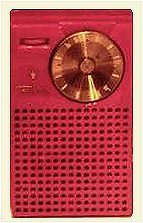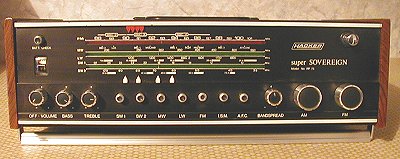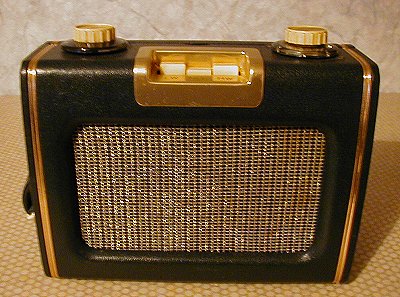|
The Discovery of the Transistor
It began in 1939. Russell Ohl was studying
crystals at Bell labs in the USA, and discovered the PN junction. Walter
Brattain who was a research physicist at Bell labs, saw Ohl’s work and
realised that it could lead to a solid state alternative to the
thermionic valve. In December 1947 he produced the first working point
contact transistor with John Bardeen. Early in 1948 William Shockley
began work on a different concept which led to the development of the
junction transistor. In July 1951 the world’s first junction transistor
was announced in a press conference. In 1956 Walter Brattain, John
Bardeen and William Shockley shared the Nobel prize for physics for
their invention of the transistor.
|

|
|
How the Transistor
Works |
Transistor Radios
 |
Transistors were first produced
commercially by the American company Raytheon, in 1952. The
first radio to be produced commercially was the Regency TR-1,
which was also manufactured in America and went on sale in
November 1954. It only used four Texas Instruments transistors,
as transistors were then very expensive. It operated from a 22.5
volt battery and sold for $49.95. Sadly sales were none too
good, mainly because of the high price. Within a very few years
prices had fallen and transistor radios became very popular.
The Regency TR-1. |
In the U.K. Mullard led the way, and by the mid 1950's was producing
its highly successful 'OC' transistor range, including the OC44, OC45,
OC71 and OC72.
| The first British transistor radio was
manufactured by Pye in June 1956. It was the Pam model 710, that
used 8 transistors made by Newmarket Transistors Ltd, which was
a subsidiary of Pye. In the following January Pye launched a
transistor radio under its own name. It was the Pye model 123
which was a vast improvement on the Pam model. In August
1957 the Perdio PR1 appeared, but sadly it was notoriously
unreliable, and in May 1958 the successful Super 7 was launched.
Before the end of the decade most of the UK manufacturers were
producing high quality transistorised receivers. |

The Pam 710. |
 |
British manufacturers produced some of the highest
quality transistor radios ever made, such as this Hacker Super
Sovereign from 1975. |
 |
The super Sovereign control panel. Like the front
panel it was an aluminium extrusion rather than the usual
plastic. |
| A fine example of a locally made transistor radio
is the Ever Ready Sky Master. It is a Medium and Long Wave
Receiver with a rexine covered plywood case. It is quite
sensitive and performs extremely well, |
 |
 |
|
 |
| Return to
the Valve Era |
|
Return to
the beginning |
|



